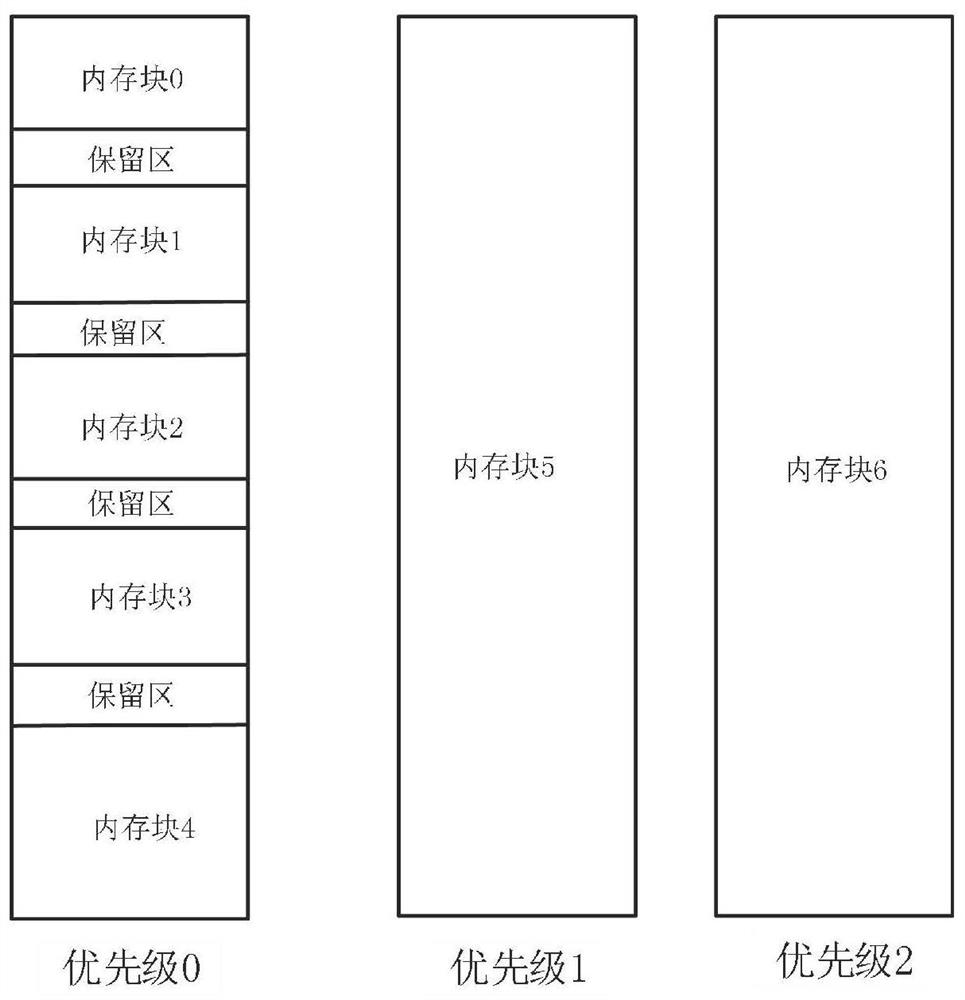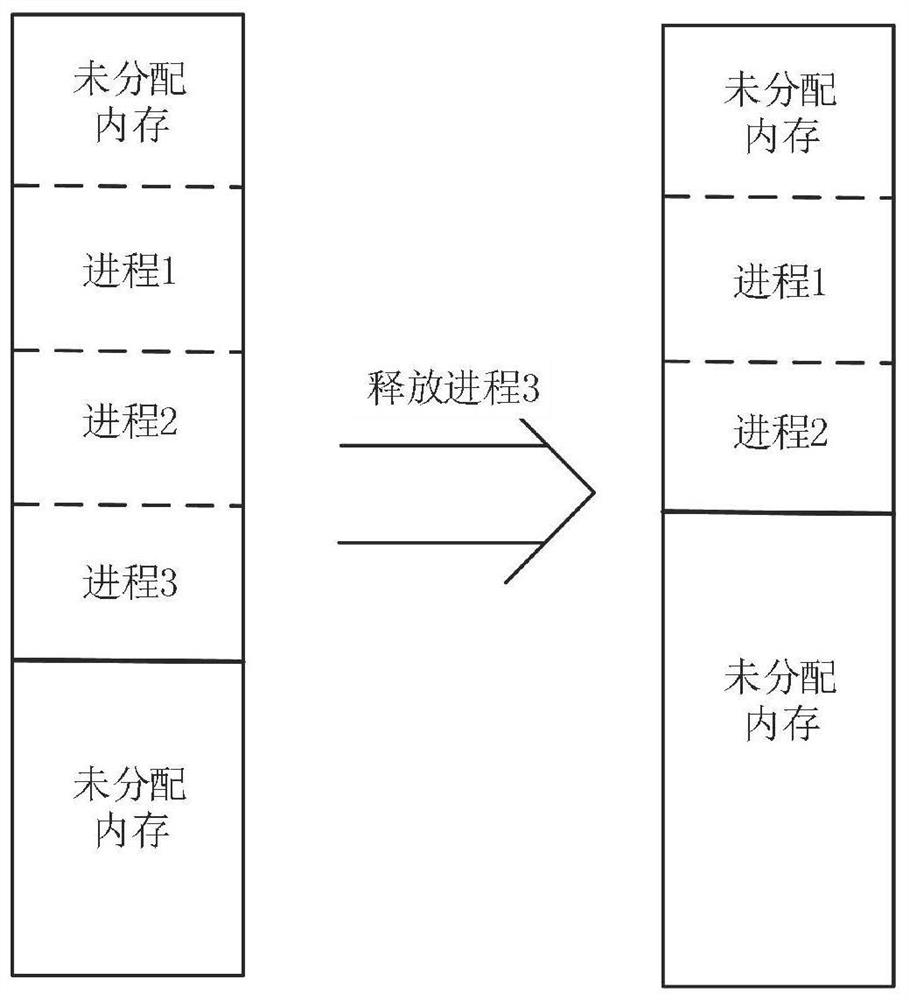Memory management method for embedded operating system of digital signal processor
An operating system and digital signal technology, applied in the field of memory management, can solve problems such as disregarding the real-time requirements of tasks, and achieve the effect of ensuring real-time requirements of tasks and shortening memory access time
- Summary
- Abstract
- Description
- Claims
- Application Information
AI Technical Summary
Problems solved by technology
Method used
Image
Examples
Embodiment 1
[0017] The invention relates to a memory management method for an embedded operating system of a digital signal processor. Aiming at the discrete memory of the digital signal processor, the priority is set according to the length of its access delay. The shorter the delay, the higher the priority of the memory. For example, according to the length of the memory block access delay, it is divided into three priorities: 0, 1, and 2, such as figure 1 As shown, the lower the value, the higher the priority.
[0018] The task process of the operating system also has a priority. The process with the highest priority applies for memory space from the memory block with priority 0 first, and the process with the lowest priority can only apply for memory space with the memory block with priority 2.
[0019] Discrete memory blocks are organized through the first-level linked list, and the memory in each memory block is organized through the second-level linked list. The allocated memory in...
PUM
 Login to View More
Login to View More Abstract
Description
Claims
Application Information
 Login to View More
Login to View More - R&D
- Intellectual Property
- Life Sciences
- Materials
- Tech Scout
- Unparalleled Data Quality
- Higher Quality Content
- 60% Fewer Hallucinations
Browse by: Latest US Patents, China's latest patents, Technical Efficacy Thesaurus, Application Domain, Technology Topic, Popular Technical Reports.
© 2025 PatSnap. All rights reserved.Legal|Privacy policy|Modern Slavery Act Transparency Statement|Sitemap|About US| Contact US: help@patsnap.com



